NCERT solutions for class 10 Maths chapter 5 all exercises of AP Arithmetic Progression in Hindi and English Medium updated for academic session 2024-25. Class 10 Maths solution is updated according to new textbooks published for CBSE board 2024 exams.
10th Maths Chapter 5 Exercise 5.1 Solutions
10th Maths Chapter 5 Exercise 5.2 Solutions
10th Maths Chapter 5 Exercise 5.3 Solutions
10th Maths Chapter 5 Exercise 5.4 Solutions
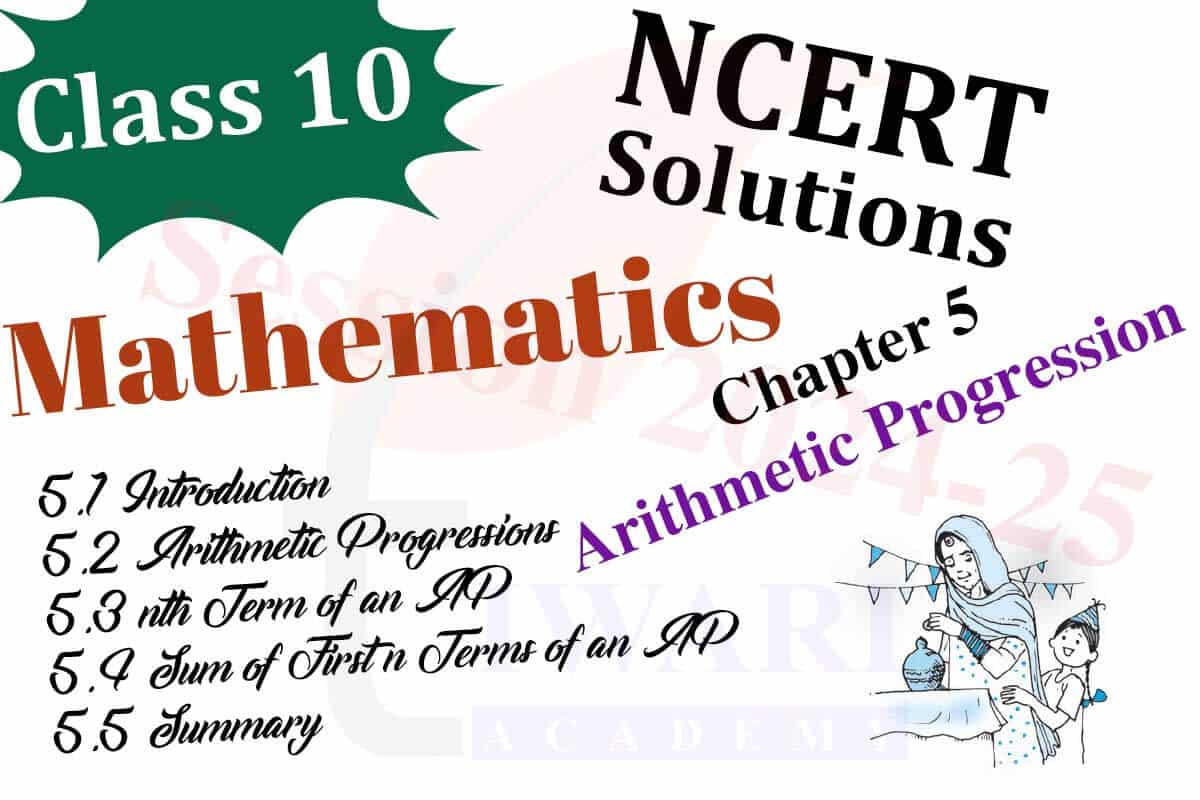
| Class: 10 | Mathematics |
| Chapter 5: | Arithmetic Progression |
| Content: | Exercise Questions Solutions |
| Content Format: | Text, Images, PDF and Videos |
| Academic Session: | Year 2024-25 |
| Medium Type: | English and Hindi Medium |
Class 10 Maths chapter 5 Arithmetic Progression – AP Solution
Class 10 Maths Chapter 5 solutions are useful for not only for CBSE Board but UP Board, MP Board, Gujrat Board, etc. also who are using NCERT Textbooks as a course books. Uttar Pradesh Madhyamik Shiksha parishad, Prayagraj has implemented NCERT Books for Class 10 students. So, UP Board High school students can download UP Board Solutions for Class 10 Maths Chapter 5 in Hindi and English Medium here.
All the Online and Offline Apps, NCERT solutions are based on latest NCERT Books. These apps are applicable for UP Board (Higher Secondary) with CBSE Board and other boards who are using NCERT Books 2024-25 in Hindi and English medium. Download Class 10 Maths Apps based on updated NCERT Solutions for new academic session 2024-25.
10th Maths Chapter 5 Solutions
NCERT Solutions for class 10 Maths chapter 5 all exercises are given to free use. NCERT Solutions 2024-25 and NCERT books are in PDF format to study online/offline by downloading in your device. Go through this page completely to know more about arithmetic series.
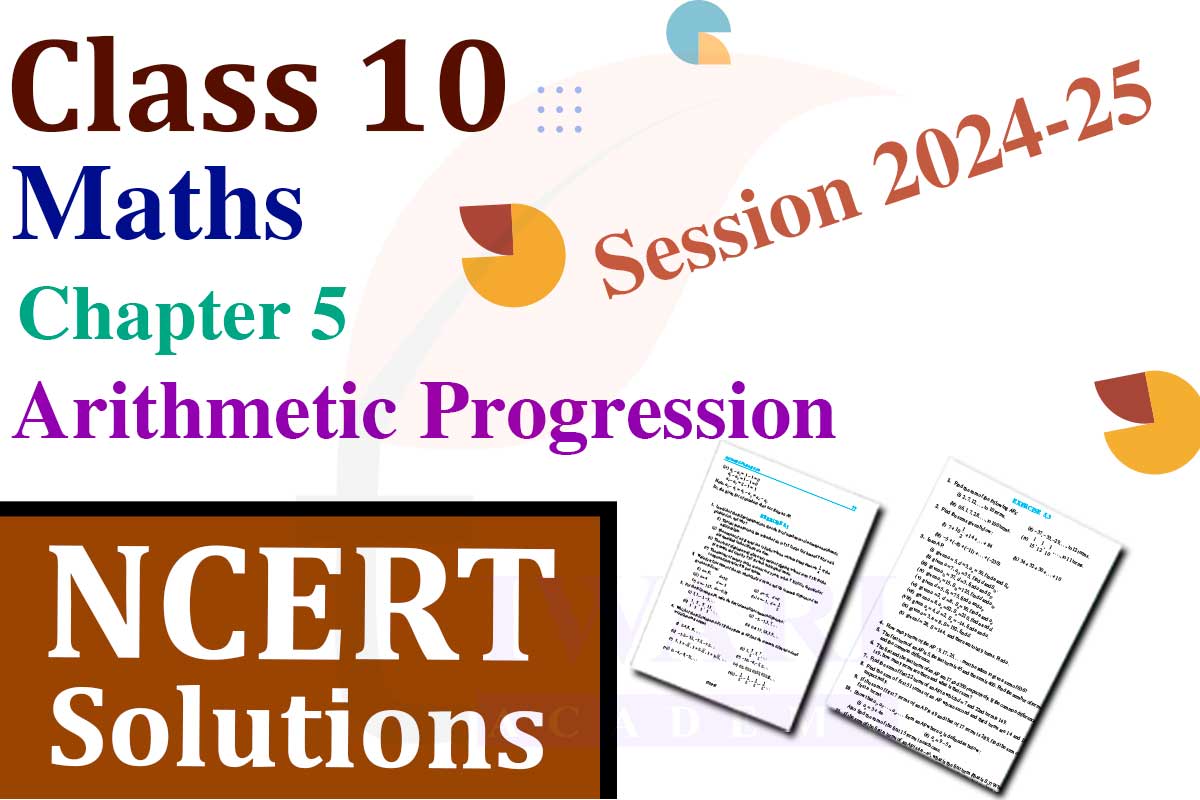
Extra Questions on 10th Maths Chapter 5?
What is an Arithmetic Progression (AP)?
An arithmetic progression (AP) is a list (or pattern or series) of numbers in which each next term is obtained by adding or subtracting a fixed number to the preceding term except the first term. This fixed number is called the common difference of the AP, it may be positive, negative or zero.
What are the objective of studying Arithmetic Progression?
Objective of studying Arithmetic Progression – AP
To identify arithmetic progression from a given list of numbers, to determine the general term of an arithmetic progression and to find the sum of first n terms of an arithmetic progression.
What is general form of Arithmetic Progression?
a, a + d, a + 2d, a + 3d, . . . is the general form of Arithmetic Progression where a is first term and d is common difference.
Be connected with us to get the latest update regarding to CBSE solutions, Sample Papers, board questions and all other study material related to class 10 Maths solutions of AP.
Previous Years Questions
TWO MARKS QUESTIONS
Find how many integers between 200 and 500 are divisible by 8. [CBSE 2017]
THREE MARKS QUESTIONS
1. Find the sum of n terms of the series (4 – 1/n) + (4 – 2/n) + (4 – 3/n) + …. [CBSE 2017]
2. If the mth term of an AP is 1/n and nth term is 1/m then show that its (mn)th term is 1. [CBSE 2017]
FOUR MARKS QUESTIONS
1. If the sum of first m terms of an A. P. is the same as the sum of its first n terms, show that the sum of its first (m + n) terms is zero. [CBSE 2017]
2. The ratio of the sums of first m and first n terms of an AP is m²:n². Show that the ratio of its mth and nth terms is (2m – 1):(2n – 1). [CBSE 2017]
About Arithmetic Progression – AP
a, a + d, a + 2d, a + 3d, . . . is called the general form of an AP, where a is the first term and d the common difference. If there are a finite number of terms in the AP, then it is called a finite AP. The general formula for finding nth term is given by a + (n-1)d and the sum of n terms is given by n/2[2a + (n-1)d]. The last term is denoted by l and given by a + (n-1)d.
Historical Facts!
1. Leonardo Pisano Bigollo also known as Leonardo of Pisano, Leonardo Bonacci, Leonardo Fibonacci was an Italian mathematician. He gave Fibonacci series on the basis of, how fast rabbits could breed in ideal circumstances. Fibonacci Series: 1, 1, 2, 3, 5, 8, 13, 21, 34, 55 … Here, every next term is sum of previous two terms. For the solutions of other maths chapters of class 10, click here.
2. Once, when famous mathematician Carl Friedrich Gauss (1777 – 1855) misbehaved in primary school, his teacher I.G. Buttner gave him a task to add a list of integers from 1 to 100. Gauss’s method was to realise that pairwise addition of terms from opposite ends of the list yielded identical intermediate sum: 1 + 100 = 2 + 99 = 3 + 98 = … = 50 + 51 = 101. So, here 1 + 2+ 3 + 4 + …. + 100 = the sum of 50 sums each equal to 101. Therefore, the sum is 5050. Finally he gave the answer in seconds.
How to Practice Arithmetic Progression in Class 10 Maths?
We all know the current state of education infrastructure of the country after the COVID-19 impact. We say education is evolving from Didactic methodology to concept-based education. However, it is still very expensive for most of the students to gain access. The disproportionate effects of the COVID-19 pandemic affected brilliant and average minds also. Undoubtedly, students and teachers are sailing the same boat to make the preparations effective. Some of the students are still finding ways to score 100% in the Maths board exam for 10th grade. We selected some of the suggestions that can help you to score well in Chapter 4 AP of class 10th.
- Step 1: Learn class 10 Maths chpater 5 with basics and Examples before starting.
- Step 2: To solve sums of 10th Maths chpater 5 take help from Online Learning Platform.
- Step 3: Class 10 Maths chapter 5 needs regular Homework and revision session.
- Step 4: Once go through the chapter 5 NCERT 10th Maths before it starts in the class.
- Step 5: Be confident with the help of regular practice in AP.
Step 1: Learn class 10 Maths chpater 5 with basics and Examples before starting.
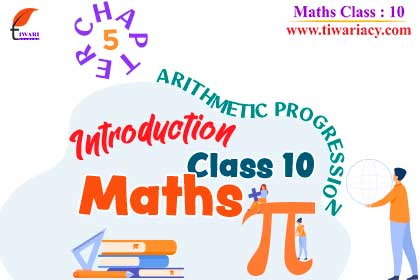
Step 2: To solve sums of 10th Maths chpater 5 take help from Online Learning Platform.

Step 3: Class 10 Maths chapter 5 needs regular Homework and revision session.
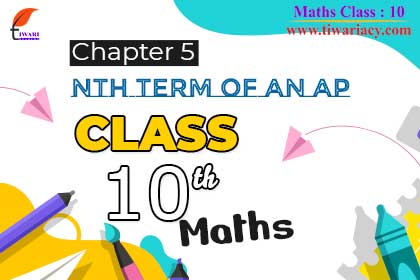
Step 4: Once go through the chapter 5 NCERT 10th Maths before it starts in the class.

Step 5: Be confident with the help of regular practice in AP.
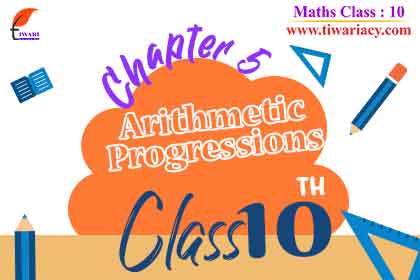
Which exercise of 10th Maths chapter 5 need less efforts?
Class 10th Maths exercise 5.2 and 5.3 are easier to solve and the scoring also. The questions given in these two exercise are based on just to formulae – nth term and sum to n terms. Most of the questions get solved just by putting the values in proper formula. So, a student can score more easily in these two exercises.
How many exercises are there in 10th Maths Chapter 5 AP?
There are 4 exercises in chapter 4 of class 10 Maths subject. Out of these exercise 5.4 is an optional exercise, which is not important for examination point of view. It is given just to practice and enhance the knowledge in arithmetic progression.
Is chapter 5 Arithmetic Progression of 10th Maths interesting?
Yes, chapter 5 of 10th Maths is very interesting chapter because you can observe Arithmetic Progressions around you at various points.
Examples of AP around you: 1) The heights (in cm) of some students of a school standing in a queue in the morning assembly are 147, 148, 149, . . ., 157.
2) The cash prizes (in Rs) given by a school to the toppers of Classes I to XII are, respectively, 200, 250, 300, 350, . . ., 750.
Is there any optional exercise in chapter 5 Class 10th Math?
Yes, there is optional exercise in chapter 5 of 10th Maths. Fourth exercise (exercise 5.4) is the optional exercise. Exercise 5.4 is not an easy exercise because this exercise contains very tricky questions.
Why chapter 5 of 10th Math important?
Chapter 5 (Arithmetic Progression) of 10th Math is important because students have to study Arithmetic Progression in class 11 maths also. Arithmetic Progression(chapter 5) of 10th maths is base of Arithmetic Progression of class 11th maths.


